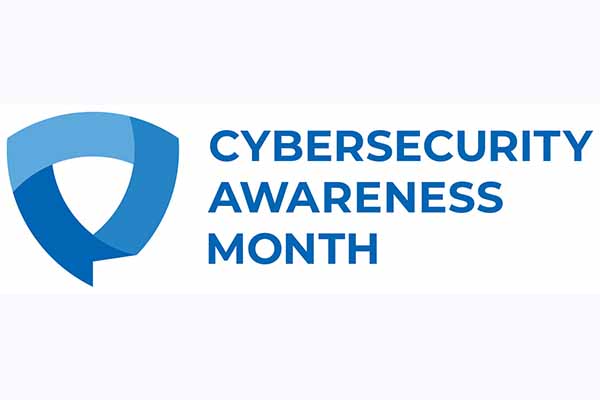Cyber-attacks continue to target businesses of all sizes, with potential threats to customers’ personal data and even the functionality of critical infrastructure services. Cybersecurity awareness month provides an excellent opportunity to remind organizations and individuals about the cyber risks they face and how to mitigate them. The article points out some key prevailing cyber threats to consider and outlines essential tips for strengthening your company’s security posture and staying safe online.
Key Cybersecurity Risks in 2022
The Human Element
The overall theme for 2022’s campaign is “See Yourself in Cyber”—this theme recognizes the central role that people have to play in cybersecurity. In fact, a compelling report by the World Economic Forum published in 2022 traced 95 percent of data breaches to human error.
Common errors include being duped by phishing attacks, downloading malware, not updating apps, oversharing information on social media, and practicing poor password hygiene. These types of errors happen both in a business and personal context, so awareness at all times is regarded as increasingly important.
Larger Attack Surfaces
Digital transformation strategies and increased cloud adoption widen the potential attack surface in IT environments and lead to increased data security risks. The hybrid work arrangements that have become the norm since the pandemic further increase the attack surface as employees connect to business resources and apps from multiple devices, including their mobile devices.
With more possible entry points than ever into IT environments, businesses face a big challenge in effective data protection. Threat actors prize sensitive customer data when conducting cyber-attacks because this valuable information commands a high price on dark web marketplaces. Ransomware attacks often involve a data exfiltration component because threat actors believe they can hold organizations to ransom with the threat of publishing stolen information.
Online Privacy
Increased recognition of online privacy risks led to an increase in new compliance regulations and strengthened existing laws over the last few years. Organizations need to ensure compliance with these laws to protect sensitive data belonging to their customers. Falling foul of these laws by not implementing appropriate security measures leads to severe reputational and monetary risks.
At an individual level, societal technology changes pose increased online privacy risks. As more services become digitized, app-based, and interconnected, individuals need to share more of their information with different parties.
Essential Cybersecurity Tips for 2022
Bearing in mind the dominant cyber threats and the general theme in 2022, here are some essential cybersecurity tips to consider at both a business and individual level.
Strengthen Authentication
One should clearly understand the importance of enabling multi-factor authentication (MFA) as a way to protect accounts from compromise. Internally, organizations should implement MFA for employee, contractor, and partner access to business apps and resources. When given the option, it’s prudent for customers to turn MFA on for any online accounts they use.
MFA requires users to provide an additional category of evidence beyond their standard username-password credentials before getting access to a specific account and its associated permissions. More secure MFA implementations typically require users to supply physical tokens or biometric scans, but it’s also important to balance user experience, compliance with data regulations, and effective security measures.
Update Software on Time
Reputable software vendors work year-round to ensure their apps remain secure. While vendors run security tests on apps before releasing them, vulnerabilities sometimes slip through testing or only emerge post-release. Security patches fix those vulnerabilities, but not applying patches on time puts the app at risk of exploitation.
The frequent use of third-party code and apps puts businesses at risk from software supply chain vulnerabilities. Even with antivirus solutions in place, software vulnerabilities can be exploited by hackers. Applying software updates on time in both personal and business IT environments reduces the risk of compromise from outdated, vulnerable apps. Turning automatic updates on means turning automatic updates on. Businesses should implement an effective patch management strategy to ensure resources, such as web applications, aren’t left vulnerable.
Improve Password Hygiene
With the human element of cybersecurity taking center stage for cybersecurity awareness month in 2022, encouraging proper password hygiene helps mitigate some of the more basic mistakes people make. Strong passwords are imperative; businesses should establish defined criteria to ensure that users can’t create basic passwords even if they want to. The same passwords shouldn’t be used across different accounts.
Given the fact that people might need to remember multiple passwords across both employment and personal accounts, it’s also worth considering a password manager. These platforms enable individuals to generate, save, and manage secure passwords for all apps they use from one vault.
Leverage Online Resources
An often-overlooked way to improve information security is to leverage the wealth of online resources that are freely available. There are several essential lessons in online safety that promotes privacy and data protection best practices.
Many Organizations publish regular cybersecurity podcasts, while gov websites make in-depth white papers and webinars available to download. The information for staying protected and avoiding mistakes is out there; make sure to use it.
Get Data Loss Prevention in Place
The ultimate motive behind many cyber-attacks is targeting and seeking to exfiltrate the crown jewel of sensitive data assets that organizations and people increasingly store in their environments and on their devices. Effectively discovering, monitoring, and protecting confidential information calls for dedicated solutions.
Data loss prevention (DLP) tools help secure sensitive data through various crucial functions, including scanning content and contexts for sensitive information, enforcing encryption, and blocking file transfers. These actions work best when deployable at the endpoint level, which is the riskiest attack point in today’s complex and distributed IT environments.
About the author:

Filip Cotfas is Channel Manager at CoSoSys.















